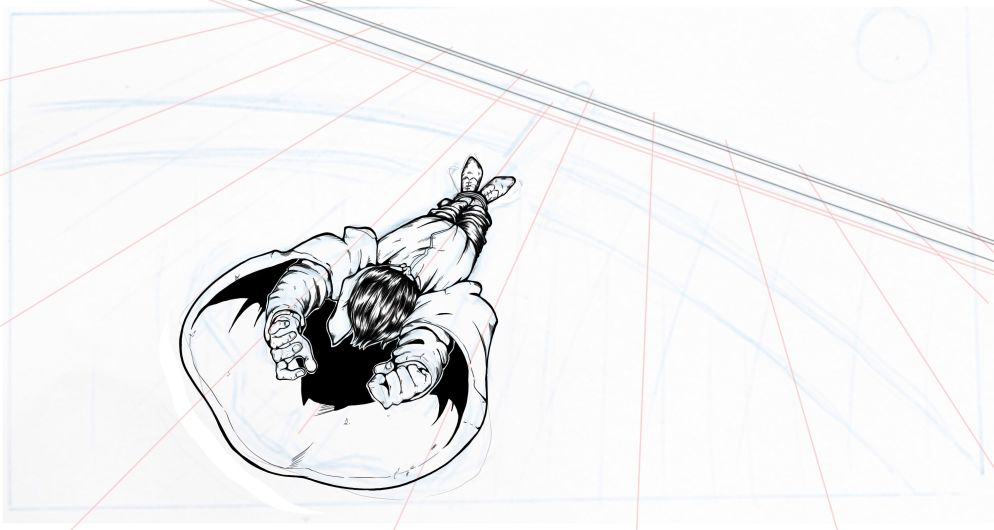
A little update here on The Jack Hansard Series. Thanks again for sticking with me – we’re making steady progress! I know it’s proving to be a long wait, but I promise the end result will be worth it. I know it’s a bit dull to just hear ‘I’m editing’ over and over again, so I thought I’d give you all a little insight into what I’ve been working on, and exactly what ‘editing’ the series means in practice.
For a start it involves…
Restructuring
The original version of the series (still available to read for free on An Inspired Mess and on Wattpad) is written over 20 episodes. The final version will be just 15.
Wait! Don’t worry – nothing’s been cut, just condensed. The original episodes were written and published on a fortnightly basis, and realistically I could only churn out up to 5000 words in that time. This meant that several stories got split over separate episodes, and the episode lengths weren’t consistent. So you’d finish reading a satisfying 5000 word episode, to then stop short at the end of a 3000 word ep like: ‘Where’s the rest of it?’
So I’ve been working on evening out those word counts, and putting full stories into one episode wherever possible. For example, remember where Jack first meets Ang in Ironbridge? This was needlessly split into two episodes – there’s not even a proper cliff-hanger to lead from one to the other! So now they are joined together in one seamless story to be enjoyed without any interruption.
What this also means is I’m…
Adding New Content
Some of those stand-alone episodes are still too short, especially near the beginning of the series. You see, when I started out my episodes were only 2000-3000 words each, but as the series developed the characters found their voices and the plots became more rounded, demanding longer stories to see them through. You can see this in the explosive Phoenix finale, which took a whole five episodes to complete!
So I’ve been adding in extra details, and occasionally whole new scenes. Remember Episode 1, where Jack gets cornered by Scallet and makes a lucky and quick escape? The story no longer ends there. You now get to see a fraction of London’s underworld as Jack goes on to encounter an old ‘friend’ at the Black Friar and… I won’t spoil it for you.
A bizarrely shaped building, the Black Friar took up a corner of Queen Victoria Street and had a habit of playing tricks on the eyes. Viewed from the side, it appeared as a long, unrealistically thin building. From the front, a V that seemed to occupy more space than was possible. Rows upon rows of art nouveau windows gave the impression of crowded bedsits built for high society. And, naturally, there was a statue of a jolly black friar with his pudgy hands folded over his stomach, beaming down from his spot right above the front door.
You can also expect more interactions with characters like Ang, Officer Jo Neills, and Mark Demdike. Oh, and the lovely Devin Tracey gets a much-needed spot in the limelight as well. You might recall he’s the devilishly handsome Irish siren from episodes 8-10. It always bothered me that I never wrote him a proper purpose other than to act as a sounding board at the Market. Why have a siren if you don’t get to glimpse their ability in action? So you can expect just that – a glimpse.
But unfortunately, as well as adding I have also been…
Cutting
Alas, it is necessary. But again, don’t get too concerned. The whole point of editing is to cut details that the reader won’t miss, like clunky, slow dialogue or a lengthy portion of exposition that would be better used later.
Perhaps one of the biggest chunks I’ve cut so far is from Episode 6: Cockermouth where Jack’s internal monologue became horribly clogged up with an explanation of his different types of customers. It was awfully long-winded and not really relevant to the situation at hand – so now it’s transformed into a much more enjoyable argument with Ang over the subject.
‘He falls into the ‘spurned lovers’ category of our demographic, Ang,’ I said knowingly. I ignored her mouthing ‘Demo-what?’ under the table. ‘Desperate people, angry people, these are our favourite customers. They have an axe to grind and I’m here to provide the grindstone.’
I should also say that if you’ve read the series’ most recent iteration on Wattpad (or here on An Inspired Mess after January 2017) then you’ve missed most of the drastic cuts already. The version currently published online is actually the second draft, which had an extensive overhaul of its own. So don’t worry – you won’t recognise what you don’t miss.
On a more cheerful note, editing also involves…
Refining Content
I suspect this is what a lot of people think editing is, while forgetting about the dirty work of necessary cuts and story structure. Technically all of editing is a refinement, but here I’m talking about the more enjoyable, low-level edits that are designed to just make the writing easier to read.
These are usually quite simple changes, a matter of phrasing and word choice to make a sentence read more smoothly. Also checking grammar and consistency – you won’t believe how long I agonised over what form my ellipsis should take. Google did not give me a straight answer.
Would you believe that in publishing it’s usually a matter of house preference? Some publishers will put the ellipsis in the middle of words like this … while others will join it on, like this…
Yet others will use a spaced out ellipsis like this . . . which was always my favourite until I discovered it caused no end of formatting problems online. A comically simple, but frustratingly time-consuming issue to overcome.
And finally…
Heeding Feedback
This is always the most important part of any editing process, and it feeds into everything I’ve outlined above. A lot of self-published authors apparently pay for professional editors to proof read and critique their work – but I’m afraid I cannot even slightly afford such services. So I did the next best thing: assembled a pool of people I trust to give me real honest feedback and help pick the series to pieces. They played a large part in shaping that initial, harsh edit.
This second round of editing is largely influenced by the voice of genuine readers; that is, people who came to read the series because they wanted to, not because I asked. If you’ve ever left a comment or shot me a private message about an episode – whether it contained praise or criticism – you can guarantee that I’ve considered carefully how it should impact on the writing.
On this note, a general tip for other writers out there: heeding feedback is not the same as always following feedback. As your spidey senses develop, you begin to learn how to differentiate – when to follow the advice of others, and when to follow your own instinct. But don’t throw out criticism just because you disagree with it. First, try to understand where that criticism is coming from, why you disagree, and then why you might be wrong.
So that’s where we’re at, guys. I think I’m about two thirds of the way through this process, and I’ll let you know when we’re close to publication. If you’ve been wondering, the series will be available through Amazon Kindle as an e-book later this year.
Thanks for reading! If you liked this post you might also enjoy:
Ch-ch-changes! Editing Tips Part 1
The Easy Cut: Editing Tips Part 2
The Hard Cut: Editing Tips Part 3

















